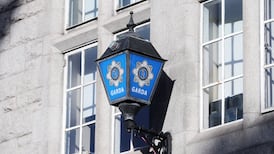HAITI:HAITI WAS reeling last night from a series of tropical storms which have devastated crops and infrastructure and left bodies floating in flooded towns.
Three storms in three weeks have unleashed "catastrophe" and submerged much of the impoverished Caribbean nation, president René Preval said. A fourth storm, Ike, is gathering in the Atlantic and could strike next week.
More than 120 people have died, thousands are homeless and agriculture and transport networks have been washed away, prompting calls for emergency international aid.
"There are a lot of people who have been on top of the roofs of their homes over 24 hours now," interior minister Paul Antoine Bien-Aime said. "They have no water, no food and we can't even help them."
Haiti, vulnerable because of its flimsy dwellings and soil erosion, has been the worst affected by the tempests that have battered the Caribbean and US Gulf coast.
Tropical storm Fay started the crisis three weeks ago. Then Hurricane Gustav wreaked havoc last week by triggering floods and mudslides that killed dozens.
Tropical storm Hanna struck on Tuesday with 100km/h winds, killing at least 61 people and flooding the northern Haitian city of Gonaives with two metres of water. Corpses and the carcasses of donkeys and cows - flies swarming around them - floated down streets which had been transformed into rivers by the flooding.
"I saw 10 bodies float in the flooded streets of the city," police commissioner Ernst Dorfeuille said.
Gonaives lies in a flat river plain between the ocean and deforested mountains that run with mud even in light rains.
With roads impassable and winds too strong for helicopters, UN peacekeepers reached the city on inflatable boats. They found hundreds of survivors clinging to rooftops, begging for water and food.
Patients in a flooded hospital had crowded into an upper floor room. At a church about 100 people huddled on a balcony, waiting for the water to recede.
"There is no food, no water, no clothes," said the pastor, Arnaud Dumas. "I want to know what I'm supposed to do . . . we haven't found anything to eat in two, three days. Nothing at all."
The UN soldiers secured a warehouse in preparation for food distribution, but could not impose order on the chaos. "It is a great movement of panic in the city," the interior minister said from an inflatable speed boat.
The US embassy in Port-au-Prince declared a disaster situation, freeing $100,000 (€69,700) in emergency aid, spokeswoman Mari Tolliver said. She added that hygiene kits, plastic sheeting and water jugs for up to 5,000 families were being sent from Miami.
Some officials feared that the aftermath would be on a par with tropical storm Jean, which left 2,000 dead in 2004.
Cuba was also counting the cost. Officials said the onslaught from Gustav in the western province of Pinar del Rio and the Isle of Youth was equivalent to the last 14 storms combined.
"There are severe damages to the electrical system. It's practically on the floor," said vice-president Carlos Lage.
"In terms of buildings and homes, roofs are generally gone. The island is exposed to the sky."
Effective organisation minimised loss of life in Cuba, but could not save property. State media reported that 503 schools and 100,000 homes were affected. Some 3,306 tobacco curing barns were destroyed, along with thousands of tonnes of tobacco leaves, coffee and grapefruit.
Former president Fidel Castro said the damage was immense. He said: "The photos and videos transmitted on national television reminded me of the desolation I saw when I visited Hiroshima."
Forecasters do not know whether Ike, a category four storm advancing from the east, will make landfall. With winds of 225km/h it could be disastrous. Ike is the third major hurricane of the Atlantic season, which runs from June to November. - (Guardian service)










